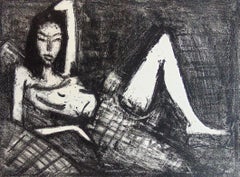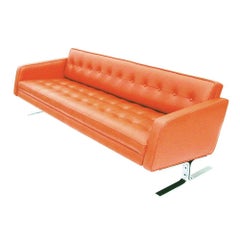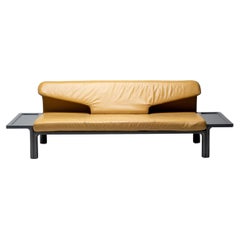Mueller Sofa
Girl on the Sofa Mädchen auf dem Kanapee - German Expressionism
By Otto Mueller
Located in London, GB
This original lithograph is hand signed in pencil by the artist “Otto Mueller” at the lower right
Category
1920s Expressionist Nude Prints
Materials
Lithograph
$14,000
H 17.13 in W 22.17 in
Recent Sales
Vintage Mid-Century Widdicomb Mueller Jack Cross Leather Chrome Sofa
By Widdicomb Furniture Co.
Located in Pasadena, TX
Mid-Century Mueller Sofa by Jack Cross
Stunning with chrome and orange leather, measures 7 feet
Category
Vintage 1960s American Mid-Century Modern Sofas
Materials
Chrome
Rare Artifort 700 Setsu Sofa
By Wolfgang Mueller Deisig, Artifort
Located in Dronten, NL
Versatile space-age sofa designed in 1972 by Wolfgang Muller for Artifort.
With the armrests
Category
Vintage 1970s Dutch Mid-Century Modern Sofas
Materials
Aluminum
People Also Browsed
California Impressionist OilPainting The Cliffs Trabuca Canyon Aaron Kilpatrick
Located in Chesterfield, NJ
Aaron E. Kilpatrick
Landscape painter. Born in St Thomas, Canada on April 7, 1872. Kilpatrick was educated in the public schools of Winnipeg and moved to the U.S. in 1892. By 1907 he...
Category
21st Century and Contemporary Impressionist Landscape Paintings
Materials
Oil
$2,000 Sale Price
20% Off
H 10.5 in W 12.5 in D 0.5 in
INSTRUCTION
By Thomas Hart Benton
Located in Santa Monica, CA
THOMAS HART BENTON (1889-1975)
INSTRUCTION 1940 (Fath 41)
Lithograph, signed edition of 250 as published by Associated American Artists.
10 ¼” x 12 ¼”. Full margins, deckle edges....
Category
1940s American Realist Figurative Prints
Materials
Lithograph
Adult film star Cal Culver (AKA Casey Donovan) 'After Dark' Nude, Signed
By Jack Mitchell
Located in Senoia, GA
Adult film star Cal Culver (AKA Casey Donovan) 'After Dark' magazine nude study, photographed in 1972. This is a vintage gelatin silver print, selenium toned, made by hand by master ...
Category
1970s Pop Art Black and White Photography
Materials
Silver Gelatin
$1,210 Sale Price
44% Off
H 14 in W 11 in
Get Updated with New Arrivals
Save "Mueller Sofa", and we’ll notify you when there are new listings in this category.


